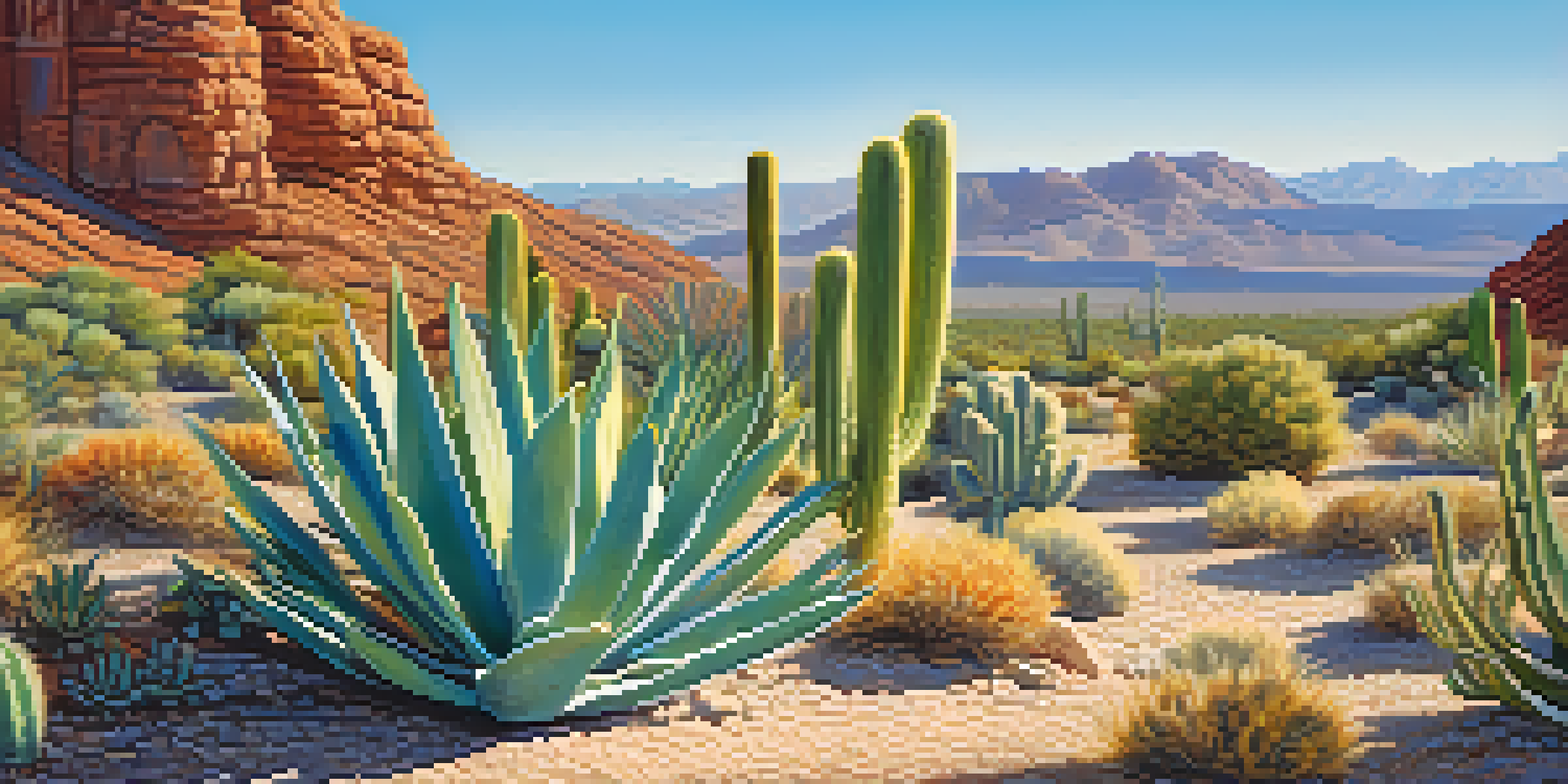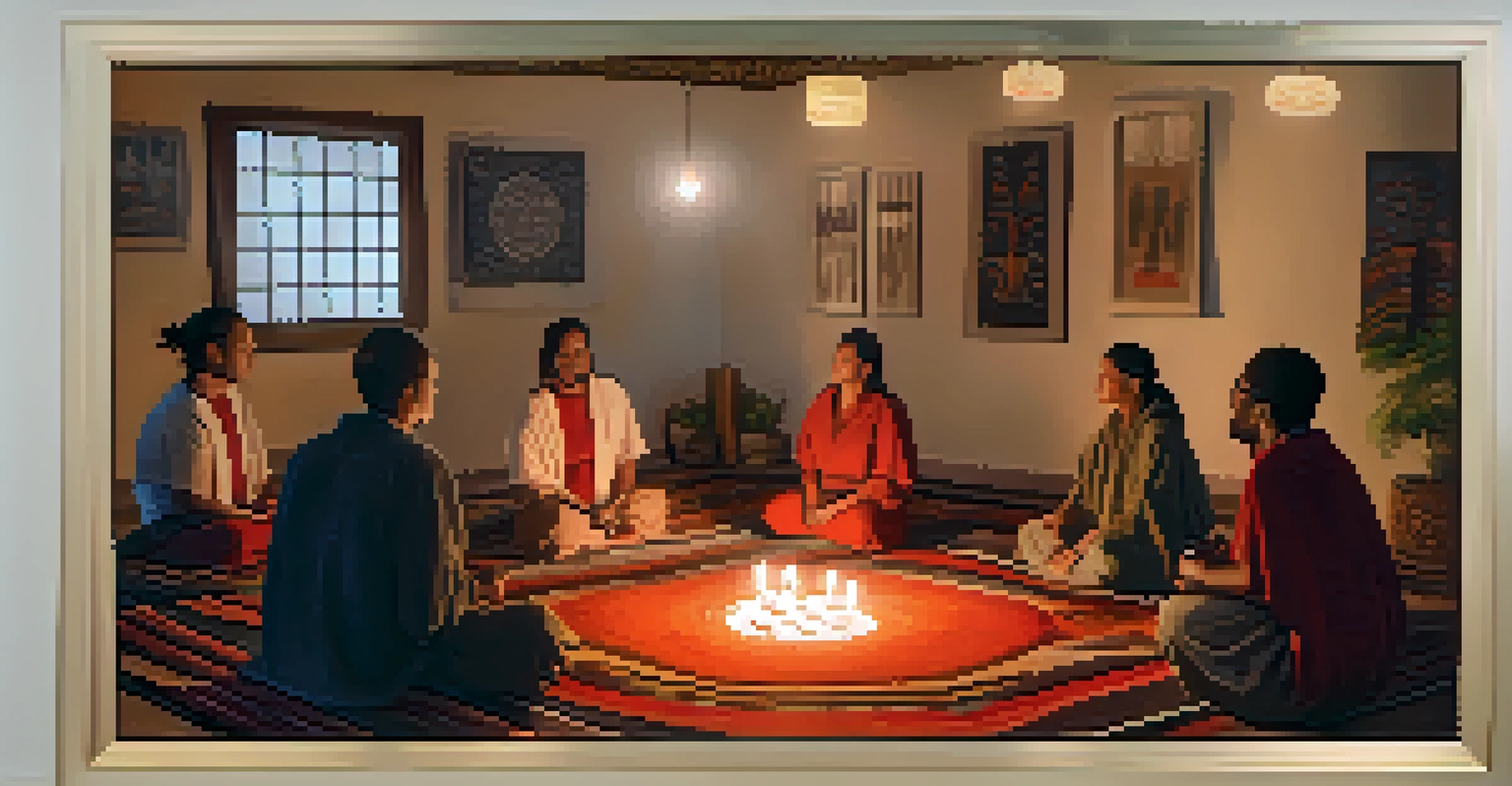The Role of Peyote in Healing Practices of Indigenous Tribes

Understanding Peyote: A Sacred Cactus in Indigenous Culture
Peyote is a small, spineless cactus native to Mexico and the southwestern United States. It contains mescaline, a psychoactive compound that has been used for centuries in spiritual ceremonies by various Indigenous tribes. This plant is not just a hallucinogen; it holds deep cultural and spiritual significance in healing practices.
Peyote is not just a hallucinogen; it holds deep cultural and spiritual significance in healing practices.
For many tribes, peyote represents a connection to the divine and serves as a bridge between the physical and spiritual worlds. Its use is traditionally accompanied by rituals that emphasize respect for nature and the ancestors. This holistic approach to healing incorporates not just the body, but also the mind and spirit.
The reverence for peyote reflects a broader worldview among Indigenous peoples, where nature and spirituality are intertwined. By understanding its role, we can appreciate how peyote contributes to the overall well-being of individuals within these communities.
Peyote in Healing Rituals: A Path to Wellness
Healing practices involving peyote often take place in ceremonial settings, where participants engage in guided experiences led by a shaman or spiritual leader. These rituals can last several hours and include singing, drumming, and sharing personal stories. The communal aspect fosters a sense of belonging and support, which is vital for emotional healing.

During these ceremonies, the effects of peyote can lead to profound insights and emotional releases. Many participants report experiencing visions or heightened awareness that help them confront personal traumas or life challenges. This process of introspection is crucial in many Indigenous healing traditions.
Peyote's Cultural and Spiritual Roots
Peyote holds deep cultural and spiritual significance for Indigenous tribes, serving as a bridge between the physical and spiritual realms.
The integration of peyote into healing rituals demonstrates a holistic approach, addressing not just physical ailments but also emotional and spiritual distress. This comprehensive perspective is a hallmark of Indigenous healing practices, emphasizing the importance of community and shared experiences.
Historical Context: Peyote's Role in Indigenous Societies
The use of peyote dates back thousands of years, with archaeological evidence suggesting its consumption in ritual contexts. Indigenous tribes, such as the Huichol and the Native American Church, have long included peyote in their spiritual practices, viewing it as a gift from the creator. This historical significance underscores its role in cultural identity and continuity.
Understanding the historical context of peyote usage helps us appreciate the depth of its significance in healing practices.
Colonization and the introduction of Western ideologies posed significant challenges to Indigenous practices. Despite these obstacles, many tribes have preserved their traditions and continue to use peyote in healing ceremonies. This resilience speaks volumes about the importance of cultural heritage in maintaining spiritual and physical health.
Understanding the historical context of peyote usage helps us appreciate the depth of its significance in healing practices. It’s not merely a substance but a symbol of resistance and cultural survival for many Indigenous communities.
Modern Perspectives: Peyote and Contemporary Healing
In recent years, there has been a resurgence of interest in peyote and its therapeutic potential, both within Indigenous communities and beyond. Many people are exploring alternative healing methods, including plant medicine, as a way to address mental health issues. This growing curiosity invites a dialogue between traditional practices and modern therapeutic approaches.
Researchers are beginning to investigate the benefits of mescaline, the active compound in peyote, in treating conditions like PTSD and depression. While scientific studies are limited, anecdotal evidence suggests that peyote can facilitate healing by promoting emotional release and clarity. This intersection of traditional knowledge and modern science is an exciting area of exploration.
Healing Through Ceremonial Practices
Peyote is integrated into healing rituals that foster community support, emotional release, and personal insight.
However, it’s crucial to approach this trend with respect for Indigenous cultures and their practices. Ethical considerations around the use of peyote must be at the forefront as we navigate the complexities of modern healing.
Cultural Significance: Beyond Healing to Identity
Peyote is more than a healing tool; it is a central element of cultural identity for many Indigenous tribes. The rituals surrounding its use are steeped in tradition and community, helping to maintain a sense of belonging among participants. This cultural significance is essential in fostering resilience and continuity in the face of modern challenges.
For many Indigenous peoples, the act of consuming peyote in a ceremonial context reinforces their connection to their ancestors and heritage. It serves as a reminder of their history, teachings, and the importance of preserving their cultural practices for future generations. This aspect of identity is crucial for holistic healing.
Acknowledging the cultural significance of peyote helps us understand its multifaceted role in Indigenous societies. Recognizing this connection is vital for fostering mutual respect and appreciation for these ancient traditions.
Ethical Considerations: Respecting Indigenous Practices
With the growing popularity of peyote in alternative healing, ethical considerations must take center stage. Indigenous tribes have specific protocols for its use, and it is crucial to respect these traditions. Appropriating peyote without understanding its cultural context can lead to exploitation and disrespect for Indigenous knowledge.
Many tribes emphasize that peyote ceremonies should only be conducted by trained leaders who understand the spiritual and cultural implications of the practice. This ensures the safety and integrity of the experience for participants. Therefore, seeking guidance from Indigenous communities is essential for anyone interested in exploring peyote for healing.
Respecting Indigenous Traditions
Engagement with peyote for healing must be approached ethically, respecting Indigenous practices and the cultural heritage associated with its use.
By engaging respectfully with Indigenous practices surrounding peyote, we can foster a more inclusive dialogue that honors both traditional knowledge and contemporary healing modalities. This respectful approach is vital for ensuring the sustainability of these practices.
The Future of Peyote: Challenges and Opportunities
As interest in peyote and its healing properties grows, several challenges arise. One significant issue is the sustainability of peyote populations, which are threatened by overharvesting and habitat loss. Protecting these cacti is essential for the continuation of Indigenous practices and the preservation of cultural heritage.
Additionally, as more people seek to use peyote for healing, it raises questions about access and cultural appropriation. Ensuring that Indigenous communities retain their rights to this sacred plant while navigating the complexities of modern healing practices is vital. This balance is crucial for the future of peyote use.

Despite these challenges, there are also opportunities for collaboration and learning between Indigenous and non-Indigenous communities. By fostering mutual respect and understanding, we can work together to ensure that the healing traditions surrounding peyote thrive for generations to come.